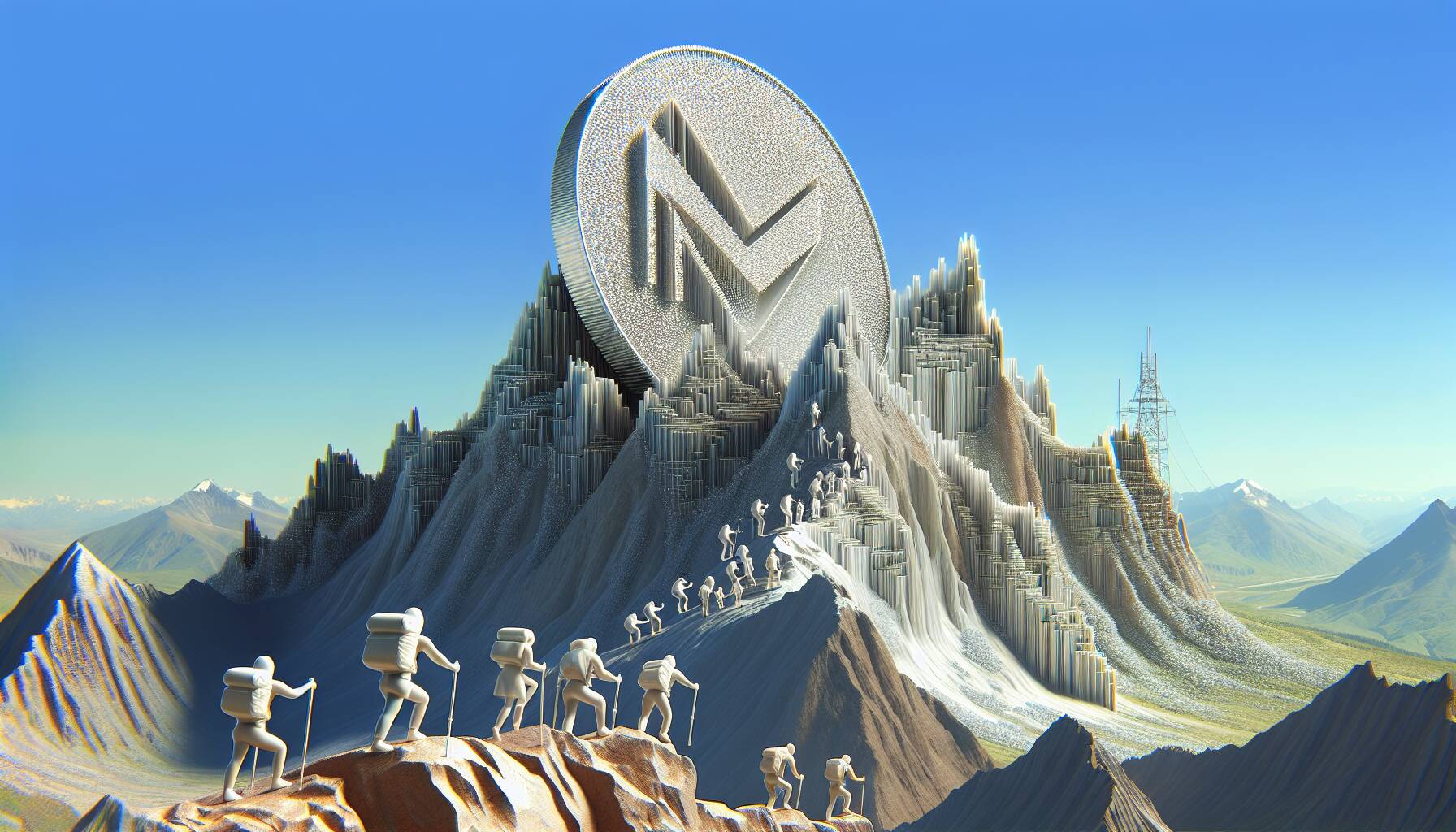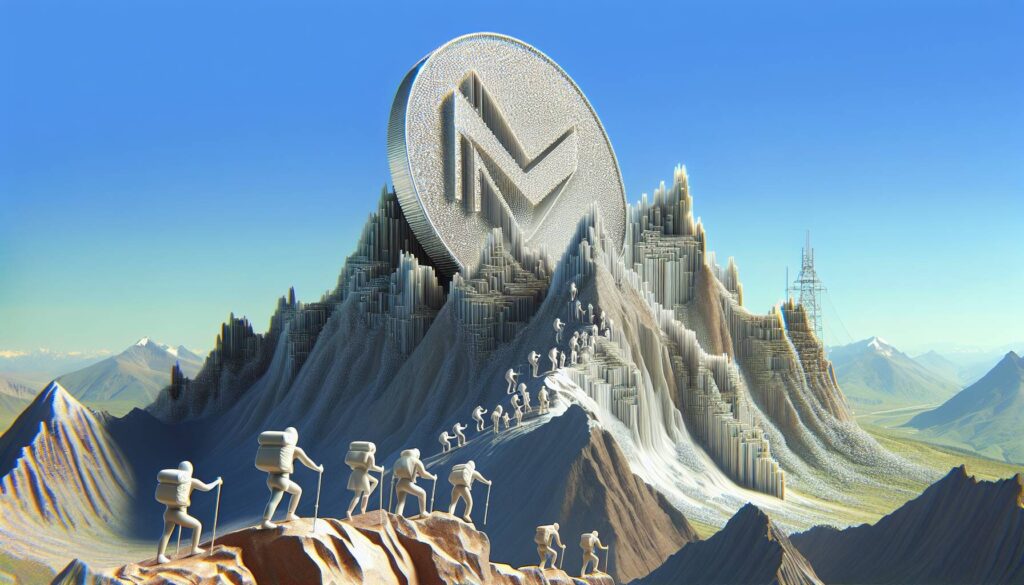The AI-focused NEAR token experienced a downturn of 2% on Tuesday, reflecting broader weaknesses in the altcoin market and the adverse reaction to a recent governance proposal put forward by trading firm DWF Labs. This proposal aimed to reduce NEAR’s inflation rate from 5% to 2.5%, which, while potentially increasing token scarcity, raised concerns among network validators about a possible shift to alternative networks due to diminished rewards. Such concerns spark a debate on the balance between incentivizing validators and maintaining decentralization.
On the technical side, the NEAR token saw significant price movements throughout the trading session. The period between 19:00 and 20:00 on June 30 marked a peak, followed by a series of lower highs, indicating persistent selling pressure. However, the recent hour before 14:05 on July 1 showcased a notable shift, as NEAR-USD surged from $2.08 to $2.10, achieving a 1% increase. This price action created a clear upward channel characterized by higher lows and highs, especially during an exciting surge between 13:25 and 13:33, where the price surpassed the $2.08 resistance and solidified support at $2.09.
A remarkable volume spike at 13:40-13:41 prompted a brief pullback to $2.08, but buyer interest quickly returned, propelling the price back to a session high of $2.10 by 14:05. This recovery hints at underlying demand and may indicate the likelihood of further upward momentum as traders assess the implications of recent developments in the governance landscape and market dynamics.

AI-Focused NEAR Token Market Insights
Key points on the current state and potential impacts of the NEAR token:
- Market Decline:
NEAR token is down by 2% amidst a broader altcoin market weakness, reflecting market sentiment.
- Governance Proposal by DWF Labs:
DWF proposed to reduce NEAR’s inflation rate from 5% to 2.5%, which may lead to scarcity of tokens.
- Validator Concerns:
Reducing rewards could prompt network validators to migrate to other networks, raising decentralization concerns.
- Technical Analysis:
The period from June 30th shows selling pressure, with lower highs indicating potential testing of support zones.
- Recent Price Movement:
On July 1, NEAR-USD showed a bullish trend, rising from $2.08 to $2.10, suggesting strong underlying demand.
- Volume Spikes:
Significant volume occurred around specific timestamps, indicating active trading and price support dynamics.
Understanding these market movements and governance implications can help investors make informed decisions regarding their positions in the NEAR token.
NEAR Token’s Volatility: Insights into Market Dynamics
The recent downturn of the AI-focused NEAR token, now reflecting a 2% decrease amid broader altcoin market struggles, presents an interesting scenario worthy of analysis. This trend aligns with the recent governance proposal put forth by DWF Labs, aiming to reduce the token’s inflation rate from 5% to 2.5%. While the intention behind this move is to enhance token scarcity and potentially increase prices, it raises pertinent questions regarding its impact on network validators. If rewards for these validators diminish too significantly, many may choose to migrate to other more profitable networks, which can threaten the decentralization and security of the NEAR ecosystem.
When compared to other altcoins navigating similar inflationary concerns, NEAR faces distinct competitive advantages and disadvantages. On one hand, reducing inflation might support a bullish sentiment in the long run, appealing to investors interested in scarcity and value appreciation. Conversely, the immediate negative market reaction reveals traders’ apprehensions about governance changes and their implications on returns. This duality represents a delicate balancing act for NEAR, where beneficial scarcity could paradoxically alienate a crucial segment of its community — the validators.
For potential investors and long-term holders, this environment could offer opportunities to accumulate NEAR at lower prices during temporary dips. However, the ongoing changes could dissuade risk-averse stakeholders who prioritize steady rewards over speculative short-term gains. Moreover, other decentralized networks may capitalize on NEAR’s uncertainties, potentially drawing away users and investments. In the fast-evolving cryptocurrency landscape where agility and community support are key, the trajectory of NEAR token remains a vivid illustration of how governance decisions can ripple through market dynamics, impacting a variety of stakeholders.

















